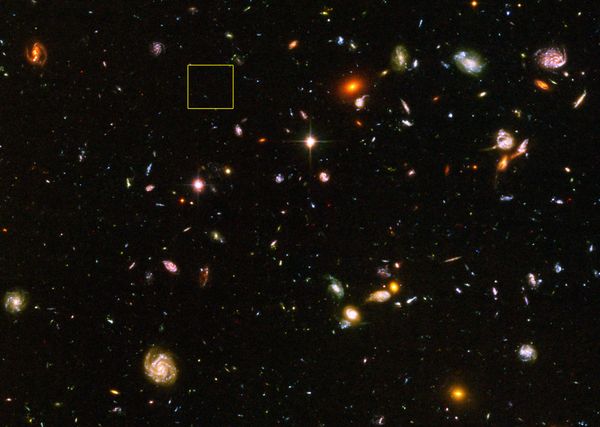Science News
Most Distant Galaxy

In this week’s Nature, scientists published an article describing the most distant galaxy ever observed. The newly discovered galaxy, called UDFy-38135539 is 13.1 billion light years away, existing at the edge of time, 600 million years after the big bang. This makes the finding that much more extraordinary as scientists hope it sheds light on how the Universe began.
The galaxy was actually revealed in a Hubble photograph in 2009. It was a very faint light among very bold and bright galaxies.
It might have become irrelevant, but a ground-based telescope took another look. From ScienceNow:
To measure the distance to the galaxy, lead author Matthew Lehnert of the Paris Observatory, Nicole Nesvadba of the University of Paris, and their colleagues took a spectrum of the object using a spectrograph mounted on the European Southern Observatory's Very Large Telescope in Chile. By analyzing the spectrum, the researchers determined that the galaxy had a red shift of 8.55, corresponding to a distance of 13.1 billion light-years.
Nesvadba sums up this work in a press release:
Measuring the redshift of the most distant galaxy so far is very exciting in itself, but the astrophysical implications of this detection are even more important. This is the first time we know for sure that we are looking at one of the galaxies that cleared out the fog which had filled the very early Universe.
When the Universe was about 400 million years old, it began to go through what scientists call the reionization era. Universe Today and Bad Astronomy have good descriptions of this era, and a supporting article in Nature puts it most succinctly:
According to astronomers’ best models, the early Universe burst out of the Big Bang around 13 billion years ago as an ionized fireball. This ball of gas gradually cooled, becoming neutral as protons and neutrons combined to form hydrogen. “Then stars and galaxies began to form, lighting up the Universe, heating up the gas and reionizing it,” says Lehnert. “This galaxy allows us to peek at the reionization era.”